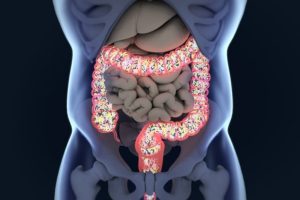Acute intestinal infections are a fairly common pathology in children of various age groups.
Children are especially sensitive to the effects of infectious pathogens, which is the reason for the rapid development of the main manifestations of the disease – a sharp increase in body temperature, repeated vomiting, loose stools, refusal to eat, which practically within a few hours leads to dehydration due to loss of water and salts, an increase in intoxication , the progressive deterioration of the baby’s condition.
In such a situation, it is imperative to timely and promptly provide the entire range of measures for child care.
Even a single vomiting is a reason to stop feeding. If vomiting is repeated, feedings are canceled for 4-8 hours: all this time, the child needs a continuous supply of fluid to replenish its losses and maintain the normal functioning of internal organs.
What and how to give a child to drink? For children in the first months of life, first of all, it is boiled water, salt-containing solutions (rehydron, citroglucosolan), baby tea. Older children can be given, in addition, a decoction of vegetables, fruits (carrots, apples) without added sugar, mineral water without gas and freshly brewed weak, slightly sweetened tea. The amount also depends on age: children of the first year of life should be given 50-60 ml. per hour, from one to three years – 80-90 ml. per hour, older – 100-120 ml. in hour.
It is extremely important to remember that all the proposed liquid should be at a comfortable temperature, heated to 30-35 degrees, in addition, the child must be given fractional water, i.e. give a little drink, 1-2-3 teaspoons every 5-10 minutes, monitoring his condition – the presence of nausea, retching, general health. All this time, a careful record of the liquid drunk and the amount of urine is kept, for which young children should be left without a diaper for a while. Or, if possible, weigh his diaper at least every two hours.
If vomiting does not recur within 4-6 hours, the child is active enough, drank the entire volume of liquid and his temperature does not exceed 38 degrees, you can try to start feeding. What to feed? For breastfed babies, breast milk is by far the best nutrition during this period. The baby should be applied to the breast at least every two hours, or more often. If the baby is breastfeeding actively enough, with each subsequent feeding, he receives an increasing portion of milk, which will gradually increase the breaks between feedings to 3-3.5 hours. It is better not to give complementary foods on the first day of illness.
In the absence of breast milk, feeding after a break begins with the usual nutrition for the child, corresponding to his age. It can be adapted milk formula, incl. fermented milk or lactose-free. The volume of the first after a break in feeding is no more than half of the usual, which the baby absorbed before the illness.
If the child’s appetite is restored, then gradually, within 6-8 hours, the feeding volume can be brought to two-thirds of the usual. We continue to give the missing amount of liquid in between feedings. On the second day, if the child’s condition has improved, in addition to mixtures, you can give him porridge appropriate for his age, but not more than half of the usual volume. Children over one year old, on the second day of illness, in case of improving health and lack of vomiting, can be offered vegetable puree from potatoes and carrots or pumpkin. Starting with three to five teaspoons a day, you can take it in two doses. It is still necessary to control how much fluid the child absorbs during the day, taking into account absolutely all food and drink.
If the child’s illness is accompanied by an increased body temperature (more than 38 degrees), it becomes necessary to take antipyretic drugs. In the presence of persistent vomiting, preference should, of course, be given to medicinal preparations in the form of suppositories containing paracetamol (efferalgan, cefekon) in an age-appropriate dose. If vomiting is repeated no more than 1-2 times, the child can be given Nurofen. If the body temperature does not exceed 38 degrees, it is better to do without antipyretic drugs. During the day, antipyretic drugs can be used no more than 3 times. If the temperature remains high, then it is necessary to additionally consult with the doctor supervising the child.
In acute intestinal infections, inflammation of the mucous membrane leads to a sharp impairment of water absorption and accelerated evacuation of intestinal contents. As a result, diarrhea occurs. The loss of water and salt in the stool can be so intense that it can be difficult to compensate for it with fluid intake. The child is simply not able to drink and assimilate a volume that is 2-2.5 times higher than the usual portions of food and drink. To reduce the loss of water and salts, enterosorbent (smecta or ultra zosterin) should be given to the patient in 4-6 doses during the day. All therapeutic measures should be carried out under the supervision and supervision of a physician. The slightest changes in the child’s condition must be promptly reported to your pediatrician, since in the event of a severe course of the disease and in violation of the prescribed regimen, the child’s condition may worsen and hospitalization may be required.
You should not give your child antibiotics, antidiarrheal https://en.wikipedia.org/wiki/Antidiarrhoeal and antiemetic drugs on your own without the permission of the doctor. All necessary treatment must be individualized, informed and up-to-date. Diet restrictions must be observed for 5-7 days, in severe forms – up to 10 days. The transition to the baby’s usual diet should be gradual, taking into account all the recommendations of your pediatrician.
Compliance with the doctor’s prescriptions, your concern, patience and attention to any changes during the course of the illness is the sure way to a speedy recovery of the child.